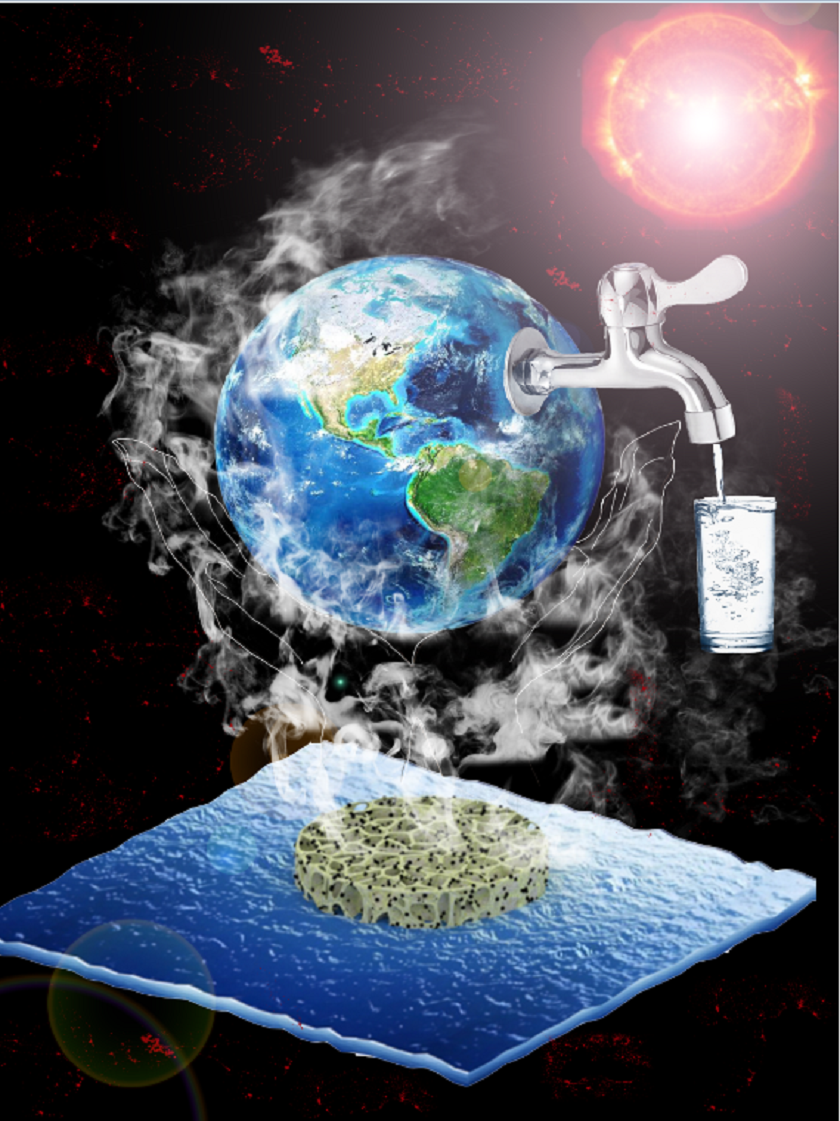Dec 10 2020
There is no life without drinkable water. Despite this scary fact, almost 1.1 billion people across the world do not have access to freshwater, while another 2.4 billion individuals suffer from diseases caused by unclean drinking water.
 A solution to the growing clean drinking water availability problem is direct solar steam generation technology, which can remove harmful soluble pollutants from water. Image Credit: Lei Miao from Shibaura Institute of Technology.
A solution to the growing clean drinking water availability problem is direct solar steam generation technology, which can remove harmful soluble pollutants from water. Image Credit: Lei Miao from Shibaura Institute of Technology.
The reason for this is that while science has led to sophisticated water treatment techniques, like reverse osmosis and membrane distillation, these are usually difficult to apply in developing nations because of their low productivity and high cost.
A more recent technology, called direct solar steam generation (DSSG), could provide an alternative method for such areas of the world. In this technology, heat is harvested from the Sun to change water into vapor, thus desalinating or removing other soluble impurities from the vapor. The resultant vapor is subsequently cooled and gathered as clean water for use.
While this technology is quite simple, a major step, called evaporation, is making it difficult to commercialize. With present-day technology, evaporation performance has reached the theoretical threshold. But this is not enough for practical applications.
Several measures have been taken to enhance the evaporation performance beyond the theoretical threshold and make this new technology more feasible. These measures involved improving the design of the device to reduce the loss of solar heat before it reaches bulk water, recycling the latent heat in the water, absorbing and using the energy from the surroundings, etc.
In a new article published in Solar Energy Materials and Solar Cells, Lei Miao, a Professor from Shibaura Institute of Technology in Japan, together with collaborators Xiaojiang Mu, Yufei Gu, and Jianhua Zhou from Guilin University of Electronic Technology in China, reviewed strategies that were developed in the last two years to exceed this theoretical limit.
Our aim is to summarize the story of the development of new evaporation strategies, point out current deficiencies and challenges, and lay out future research directions to hasten the practical application of the DSSG purification technology.
Lei Miao, Professor, Shibaura Institute of Technology
Volumetric system is a groundbreaking approach through which this evolutionary story begins. Instead of bulk heating, this system uses a suspension of carbon nanoparticles or noble metals to absorb the solar energy, transfers heat to the water that surrounds these particles, and creates steam. While this process increases the absorbed energy of the system, it also results in significant heat loss.
Hence, to deal with this problem, the researchers developed the 'direct contact type' system, wherein a double-layer structure with different sizes of pores sheaths the bulk water.
The top layer containing larger pores acts as a heat absorber and vapor escape path, while the bottom layer containing smaller pores is utilized to transport the water up from the bulk to the top layer. In such a system, the contact between the water and the heated top layer is concentrated, and the loss of heat is decreased to approximately 15%.
This was followed by the 'indirect contact type' or '2D water path' system, which further reduced the loss of heat by preventing contact between the bulk water and the solar energy absorber. This led to the ultimate development of the '1D water path' system, which was motivated by the natural capillary-action-based water transport process that occurs in plants.
The new system provides an incredible evaporation rate of 4.11 kg m−2h−1, almost thrice the theoretical threshold, together with a heat loss of just 7%. The injection-control method comes next, wherein the regulated sprinkling of water as rain on the solar energy absorber enables its absorption in a way similar to that in soil. This leads to an evaporation rate of 2.4 kg m−2h−1 with 99% conversion efficiency from the sun’s energy to water vapor.
Simultaneously, strategies to gain more energy from the bulk water itself or from the environment and retain the latent heat from high-temperature steam, are being developed to enhance the evaporation rate.
Methods to decrease the energy needed for evaporation in the initial place are also being devised, like polyurethane sponge with carbon black nanoparticles, hydratable and light-absorbing aerogels and carbon dot (CD)-coated wood to hold the solar energy and the water to be evaporated.
There are many other similar design strategies and many more are to materialize. Several relevant problems—such as the durability of the materials, the collection of the condensed water and stability during outdoor use under changing wind and weather conditions—are yet to be tackled.
However, the speed at which work on this new technology is advancing renders it one to look forward to.
The path to the practical implementation of DSSG is riddled with problems. But given its advantages, there is a chance that it will be one of the frontrunning solutions to our growing drinking water scarcity problem.
Lei Miao, Professor, Shibaura Institute of Technology
Journal Reference:
Mu, X., et al. (2020) Strategies for breaking theoretical evaporation limitation in direct solar steam generation. Solar Energy Materials and Solar Cells. doi.org/10.1016/j.solmat.2020.110842.